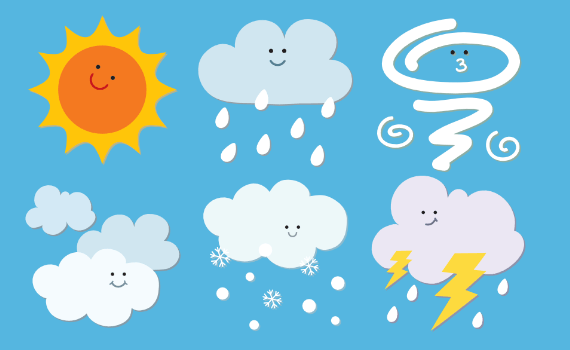
Weather
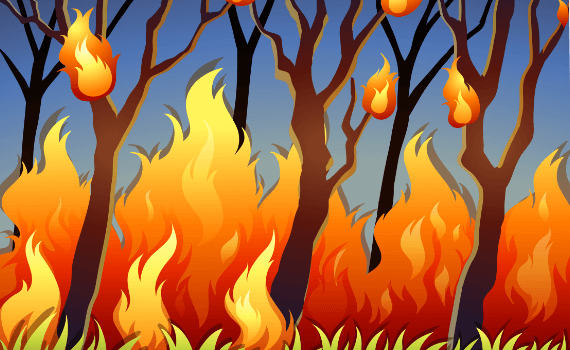
Natural Disasters

Experiments
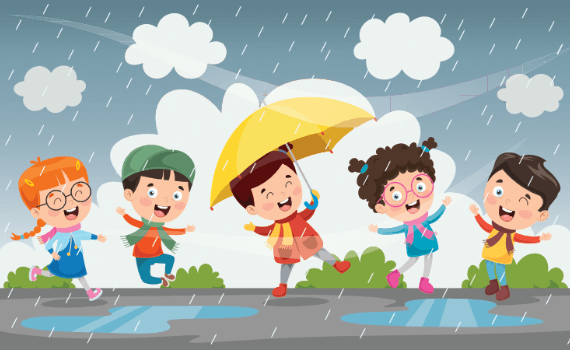
Kid's Zone
Sandstorms
What is a sandstorm?
A sandstorm refers to a high amount of wind occurring in sandy areas, usually in deserts, where the wind speed is able to lift the top layer of sand from the ground, and push it in every imaginable direction.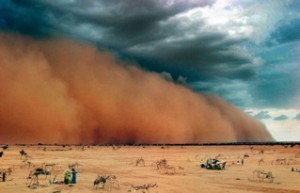
What causes a sandstorm?
Wind! Dust storms arise when a gust front or other strong wind blows loose sand and dirt from a dry surface.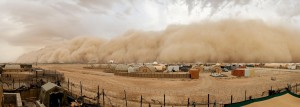
What’s the difference between a sandstorm and a dust storm?
The term sandstorm is used most often in the context of desert sandstorms, especially in the Sahara Desert, or places where sand is a more prevalent soil type than dirt or rock, when, in addition to fine particles obscuring visibility, a considerable amount of larger sand particles are blown closer to the surface. The term dust storm is more likely to be used when finer particles are blown long distances, especially when the dust storm affects urban areas.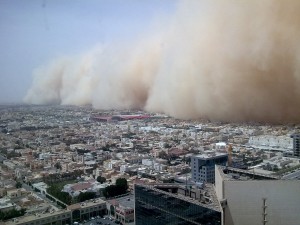
What is a haboob?
The word “haboob” comes from the Arabic word habb, meaning “wind.” A haboob is a wall of dust as a result of a microburst or downburst. The air forced downward is pushed forward by the front of a thunderstorm cell, dragging dust and debris with it, as it travels across the terrain.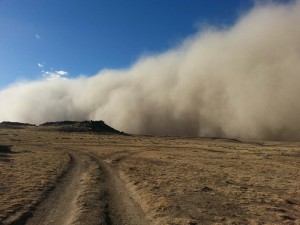
How high can a sandstorm get?
The sand involved in the sandstorm can reach heights of approximately 10-50 feet (3.05-15.24m). Usually, the height of a sandstorm corresponds to wind strength. Dust particles associated with some sandstorms have been found at 5000 feet (1524 m), though these are more rare.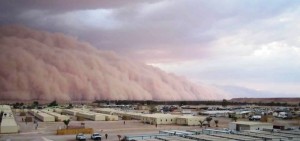
How fast can sandstorms move?
Sandstorms have wind speeds of at least 25 miles per hour (40 kilometers), so they can happen really quickly. One minute they’re not there, and the next minute they’re right next to you!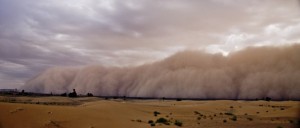
Where do sandstorms occur?
You’ll mostly find them in dry, hot desert regions. You can also find them in the US, especially in dry and flat regions like Kansas, Oklahoma, Texas, New Mexico and Arizona. They can occur is desert regions across the world.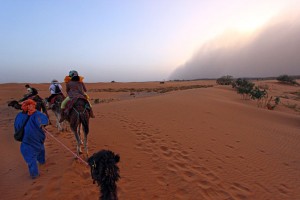
When do sandstorms occur?
They mostly occur during summer, but can occur in spring too in the United States.
How big are the particles in a sandstorm?
A lot of the particles in a dust storm or sandstorm are between 0.08mm and 1mm which also means 0.0032 and 0.04 inches in size.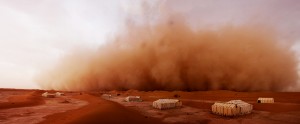
How do you navigate during a sandstorm?
It is very dangerous to navigate through a sandstorm, since your ability to see ahead can be severely obstructed. Additionally, sand can get into the nose, eyes, mouth and lungs. If you happen to be caught in a sandstorm protective eyewear like goggles, and wearing a moistened scarf over the nose and mouth are highly recommended.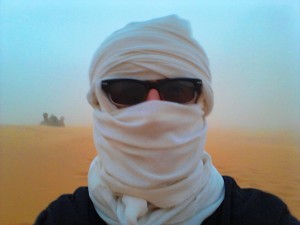
What are some hazards of a sandstorm?
Sandstorms usually arrives suddenly in the form of an advancing wall of dust and debris which may be miles long and several thousand feet high. They strike with little warning, making driving conditions hazardous. Blinding, choking dust can quickly reduce visibility, causing accidents that may involve chain collisions, creating massive pileups. Sandstorms usually last only a few minutes, but the actions a motorist takes during the storm may be the most important of his or her life.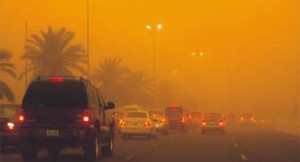
What was the Dust Bowl?
Of all the droughts that have occurred in the United States, the drought events of the 1930s are widely considered to be the “drought of record” for the nation. The 1930s drought is often referred to as if it were one episode, but it was actually several distinct events occurring in such rapid succession that affected regions were not able to recover adequately before another drought began. The term Dust Bowl was coined in 1935 to describe the drought-affected south central United States in the aftermath of horrific dust storms. Although it technically refers to the western third of Kansas, southeastern Colorado, the Oklahoma Panhandle, the northern two-thirds of the Texas Panhandle, and northeastern New Mexico, the Dust Bowl has come to symbolize the hardships of the entire nation during the 1930s.
How bad was the drought in the Dust Bowl years?
In the 1930s, drought covered virtually the entire Plains for almost a decade. The drought’s direct effect is most often remembered as agricultural. Many crops were damaged by deficient rainfall, high temperatures, and high winds, as well as insect infestations and dust storms that accompanied these conditions. The resulting agricultural depression contributed to the Great Depression’s bank closures, business losses, increased unemployment, and other physical and emotional hardships. Although records focus on other problems, the lack of precipitation would also have affected wildlife and plant life, and would have created water shortages for domestic needs.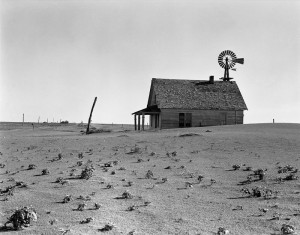
What was the Black Sunday Dust Storm?
The 1930s were times of tremendous hardship on the Great Plains. Settlers dealt not only with the Great Depression, but also with years of drought that plunged an already-suffering society into an onslaught of relentless dust storms for days and months on end. They were known as dirt storms, sand storms, black blizzards, and “dusters.” It seemed as if it could get no worse, but on Sunday, the 14th of April 1935, it got worse. The day is known in history as “Black Sunday,” when a mountain of blackness swept across the High Plains and instantly turned a warm, sunny afternoon into a horrible blackness that was darker than the darkest night. Famous songs were written about it, and on the following day, the world would hear the region referred to for the first time as “The Dust Bowl.”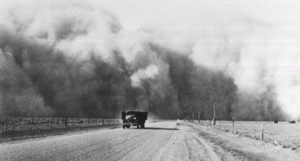
Blowing Dust Advisory – Issued when blowing dust is expected to reduce visibility to between 1/4 and 1 mile, generally with winds of 25 mph or greater.
Sandstorm Warning – issued when visibility of 1/2 mile or less due to blowing dust or sand, and wind speeds of 25 miles an hour or more.
Dust Storm Warning – issued when visibility of 1/2 mile or less due to blowing dust or sand, and wind speeds of 25 miles an hour or more.
BEFORE A SANDSTORM: Know if you live in an area prone to sandstorms. Have a safety plan in case one happens.
DURING A SANDSTORM: If dense dust is observed blowing across or approaching a roadway, pull your vehicle off the pavement as far as possible, stop, turn off lights, set the emergency brake, take your foot off of the brake pedal to be sure the tail lights are not illuminated. Don’t enter the dust storm area if you can avoid it. If you can’t pull off the roadway, proceed at a speed suitable for visibility, turn on lights and sound horn occasionally. Use the painted center line to help guide you. Look for a safe place to pull off the roadway. Never stop on the traveled portion of the roadway. Make sure all of your lights are off when you park off the roadway.
AFTER A SANDSTORM: Make sure everyone around you is okay. Check for damage.
Lesson Plan: Here is a great lesson plan that teaches kids how dust is transported in the atmosphere.
Lesson Plan: This lesson plan teaches kids how to track dust storms or sand storms.
Lesson Plan: Here are several lesson plans regarding The Dust Bowl of the 1930s.
Science Fair Project Ideas: Here is a complete list of science fair project ideas. Discover the science behind the weather that impacts us every day.
